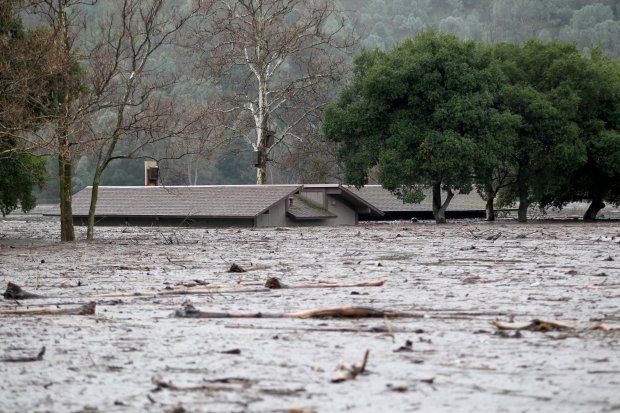Lessons Learned from Floods and Misguided Priorities
Published on by Water Network Research, Official research team of The Water Network in Government
The impacts of California’s catastrophic floods will not end when the water subsides. Even as drought conditions disappear it’s a safe bet that the politics of water won’t wane.

California flood photos, The water level almost reaches the roof of a restroom building at Del Valle Regional Park, Source: Mercury News
What will the lessons of the 2017 flood teach California? Will lawmakers make maintenance and repairs of dams, levies and roads a priority over unnecessary and more costly endeavors?
The pictures are out there to be seen on the web. Flooded farmland as far as the eye can see; homes and businesses under water; and, the damage done to the spillway and hillside at Oroville Dam are amazing but predictable.
We’ve seen epic droughts, floods and pretty much all things in between. What we haven’t seen is a move by government to responsibly respond to floods and drought.
In early February the catastrophic failure of the main spillway at Oroville Dam, the state’s second-largest reservoir and the main State Water Project storage facility, nearly led to another catastrophic failure that would have been far worse for those living and farming in the Sacramento Valley.
Still, farmers and residents weren’t spared. Water levels rose, inundating farms, homes and businesses. My guess is the damage, once tallied, could be in the billions of dollars to permanent crops, farmland, structures and ruined farm equipment.
The lessons learned from this event will extend beyond those who thought planting almonds in the heavy soils better suited for rice was a good idea. Will the floods of 2017 cause farmers and investors to rethink planting high-value crops in areas perhaps better suited for rice and other non-permanent crops?
Will the events at Oroville Dam cause our reactionary legislators to do the right thing and allocate money to the maintenance and repairs of necessary infrastructure including our dams and levees? Will they make policy priorities to perform better upkeep on these and other things like our highways and water conveyance systems instead of wasting money on pie-in-the-sky projects like bullet trains and sporting arenas?
How much more efficient would it have been for the state to repair and upgrade the spillways at Oroville Dam over a period of years when the lake was nearly dry, rather than use helicopters as a stop-gap measure to deposit boulders in a large hole to keep the facility from failing?
By Todd Fitchette
Read more at: Western Farm Press
Media
Taxonomy
- Agriculture
- Governance
- Integrated Water Management
- Drought
- Flood management
- Flood damage
- Governance & Planning
- Flood
- Crops
1 Comment
-
At least CALIFORNIA has statewide flood preventative measures and (urban and rural) land use planning and controls. Not the case eastward, in TEXAS, and certainly its largest city, HOUSTON, America's biggest, most populated city WITHOUT ZONING, frequently experiencing heavy floods killing dozens. National Urban Planning expert SAM BRODY (Texas A&M University) called HOUSTON "the No. 1 city in America to be injured and die in a flood."